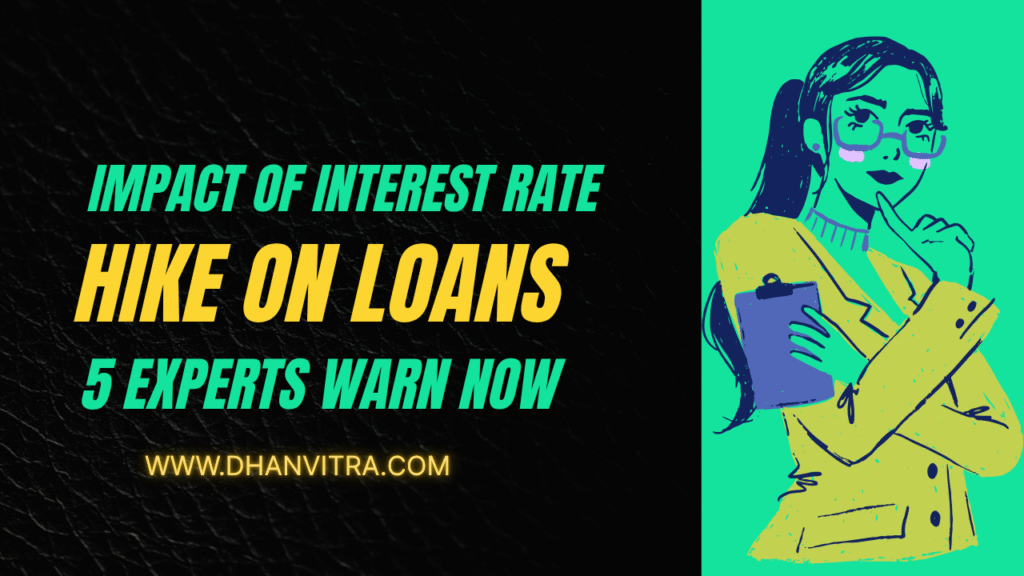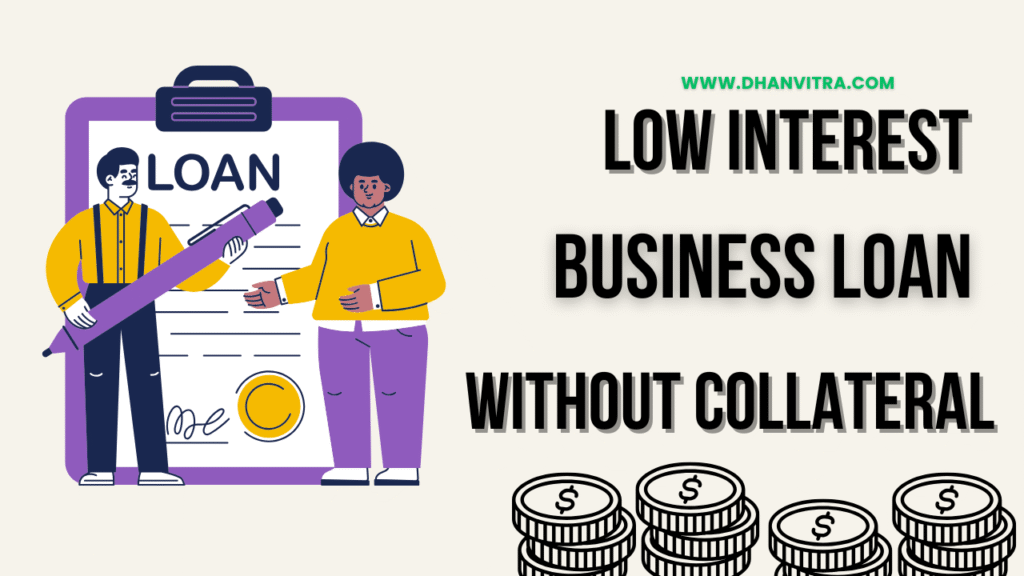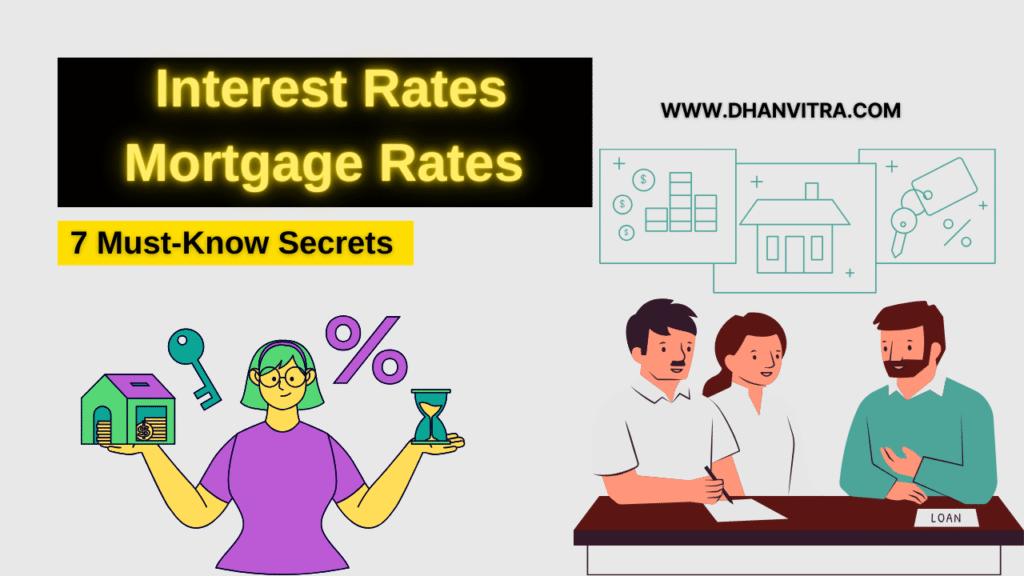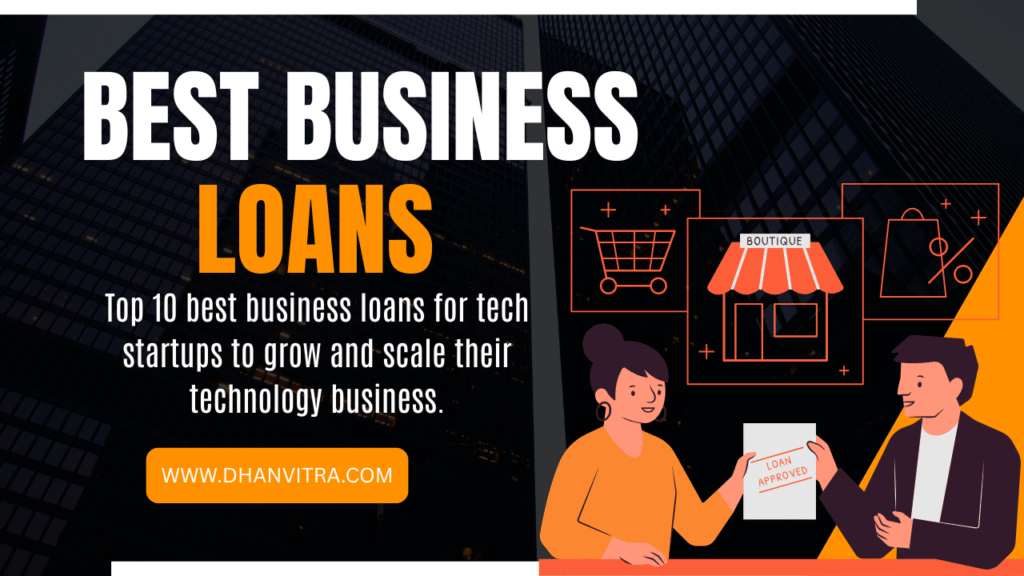
Hey there! Welcome to Dhanvitra, your trusted corner of the internet for all things finance — explained in simple, real-world language. If you’ve been keeping an eye on the news lately, you’ve probably seen headlines about rising interest rates. Banks are charging more on loans, and borrowers everywhere are starting to feel the pressure.
At Dhanvitra, we believe finance shouldn’t be confusing. Whether you’re planning to buy a home, manage a business loan, or just keep your monthly budget balanced, understanding how an interest rate hike impacts loans can help you stay ahead of the curve.
This article — “Impact of Interest Rate Hike on Loans: 5 Experts Warn Now” — breaks it all down for you. We’ll talk about why rates are rising, what experts are warning about, and most importantly, how you can protect your money in this shifting financial landscape.
Think of this as your friendly financial briefing — clear, easy to digest, and full of practical insights. We’ll walk through how mortgages, personal loans, and EMIs are changing, and what smart borrowers are doing right now to handle these hikes.
So grab your coffee, relax, and let’s dive in. By the end of this read, you’ll understand not just what’s happening in the world of interest rates, but also what you can do about it — today.
Table of Contents
What Are Interest Rates?
Interest rates might sound complicated, but they’re actually simple when you think of them as the “price of money.” When you borrow, the lender charges interest — a small percentage that compensates them for lending you funds.
Now, this number doesn’t just appear out of thin air. It’s influenced by your country’s central bank (like the U.S. Federal Reserve or the European Central Bank). When the economy heats up and inflation rises, these banks increase interest rates to cool things down. When the economy slows, they lower rates to boost borrowing and spending.
Interest rates affect everything — home loans, car loans, personal credit, and even your credit card payments. When rates rise, borrowing gets more expensive. That means the same loan amount now costs you more each month. On the other hand, savers might smile because banks start offering better returns on deposits.
So, if you’re planning to buy a house, expand your business, or even take a student loan, interest rates can make or break your financial plans. Understanding how they move is the first step toward staying ahead.
Why Interest Rates Are Rising
You might have noticed your bank recently increasing loan interest rates — and you’re not alone. Around the world, central banks are on a mission to fight inflation. Prices for essentials like food, rent, and fuel have climbed sharply in the past few years.
The main reason? Global inflation pressure. After years of pandemic-related disruptions and massive government spending, economies started to overheat. Too much money chased too few goods, pushing prices up. To bring those prices back down, central banks began raising interest rates.
There’s also another reason — maintaining currency stability. When rates are higher, foreign investors tend to pour money into a country to earn better returns. This strengthens the local currency. But if a country keeps rates too low for too long, its currency can weaken, leading to even higher import prices.
Governments and economists see these hikes as a “necessary pain.” It hurts borrowers in the short term but helps control inflation in the long run. It’s a bit like a bitter medicine — unpleasant now but better for economic health later.
Still, the pace of rate hikes in recent years has been faster than many expected. And that’s what’s worrying both consumers and experts.
The Immediate Impact on Borrowers
When interest rates rise, the first group to feel the impact is borrowers — everyday people like you and me.
If you have a home loan, you’ve likely already noticed your monthly EMI creeping up. The reason is simple: banks adjust your floating interest rate, which increases your repayment amount. For many families, this means tightening monthly budgets or postponing other financial goals.
For personal loans and credit cards, the story is even tougher. These are usually offered at higher interest rates than mortgages. So, when central banks increase rates, your personal loan or credit card interest jumps quickly. Suddenly, what felt like a manageable expense can turn into a burden.
Small business owners also feel the pinch. Higher borrowing costs mean smaller profit margins. Some companies even delay expansion plans or hiring because taking loans becomes riskier.
It’s not all bad news, though. For savers and fixed deposit holders, rising rates can be good. Banks begin offering better interest on savings accounts, deposits, and bonds. So, if you have idle cash, you might finally earn more from it.
But overall, for anyone repaying a loan, higher rates mean one thing — less money in your pocket each month.
How Rising Rates Affect Monthly EMIs
Let’s talk about something almost every borrower cares about — the EMI, or Equated Monthly Installment. It’s the fixed amount you pay every month toward your loan. When interest rates rise, EMIs go up unless your lender extends your repayment period.
Here’s a simple way to understand it:
Imagine you borrowed $100,000 at 7% interest for 20 years. If your bank raises the rate to 8%, your monthly EMI can increase by hundreds of dollars. Multiply that over 12 months, and you’ll see how quickly costs add up.
Some borrowers think switching to a fixed-rate loan might protect them — and sometimes, that’s true. Fixed-rate loans keep your interest constant even when the market changes. But they can also start at a slightly higher rate, so you need to calculate what works best for your situation.
The tricky part? Floating-rate loans. They seem attractive when rates are low, but the moment central banks increase rates, your EMI jumps without much warning. That’s why financial planners now recommend comparing both options carefully.
One practical tip is to make partial prepayments whenever you can. Even small lump-sum payments reduce your outstanding principal, which means future EMIs will drop faster.
At the end of the day, rising interest rates remind us of one key truth — borrowing is never free. Every percentage point matters. Keeping track of your loan terms and staying prepared can make a world of difference in how you manage your finances during these uncertain times.
Expert Warnings About Interest Rate Hikes
The recent wave of global interest rate hikes has shaken the lending world like a financial storm. Experts across banking, finance, and economics are sounding the alarm — not to spread panic, but to prepare you for what’s coming next.
Dr. Rebecca Mills, a senior economist at Global Insights, warns that “Rising interest rates could trap borrowers in a cycle of debt if not managed wisely.” What she means is simple: as rates climb, the cost of every borrowed dollar increases. Many households are already seeing their monthly payments balloon, especially on variable-rate mortgages.
John Peterson, a mortgage strategist, adds that this isn’t just about home loans. Credit cards, personal loans, and even car loans are feeling the heat. The higher the base rate, the higher your interest. He predicts that by early next year, delinquency rates could rise if people don’t adjust their financial habits soon.
Small business owners are also on edge. Priya Desai, an international trade consultant, says that many small and medium enterprises (SMEs) rely heavily on bank credit for daily operations. When rates rise, their cost of capital shoots up, cutting into profit margins. “If this continues,” she warns, “we’ll see reduced hiring and slower economic recovery globally.”
Dr. Alan Brooks, a global finance researcher, calls it a “global credit crunch in slow motion.” He explains that as central banks raise rates to control inflation, they unintentionally make borrowing expensive, limiting business expansion and consumer spending.
Finally, Sandra Liu, a financial advisor, sums it up: “The real danger isn’t the rate hike itself — it’s how unprepared most people are for it.” Her advice is crystal clear: act early, plan smart, and avoid emotional financial decisions.
The Global Ripple Effect
When a major economy sneezes, the world catches a cold — and that’s exactly what happens when central banks hike rates. The U.S. Federal Reserve, for instance, leads the pack. Every time it raises rates, it sends a ripple across markets from London to Mumbai.
Emerging economies face the toughest challenge. Investors pull their money out of these markets in search of safer, higher returns in the U.S. This causes local currencies to fall, making imports more expensive and inflation even worse. Countries like India, Brazil, and South Africa have already tightened their own rates to protect their currencies and curb inflation.
Meanwhile, in Europe and Asia, banks are adjusting loan terms, making credit harder to access. For ordinary people, that means fewer approvals for mortgages or small business loans. Even digital lending platforms and fintech startups are feeling the strain as funding becomes scarcer.
Another major impact is on consumer spending. When your loan payments go up, your disposable income goes down. That means fewer vacations, smaller purchases, and slower economic activity. In short, rising interest rates don’t just affect banks — they touch every part of your daily life, from groceries to gadgets.
How Borrowers Can Protect Themselves
You can’t control interest rates, but you can control how you respond. The first step is to understand your loan structure. Are you on a fixed-rate or floating-rate plan? If it’s floating, talk to your lender about switching or refinancing before rates climb further.
Next, think about refinancing options. Many banks offer loan balance transfers with lower interest rates. Even a 1% drop can save you thousands over time. Compare offers carefully and negotiate terms — banks are more flexible than you think when competition is tight.
Shortening your loan tenure is another smart move. While your monthly EMI may rise slightly, you’ll pay much less interest overall. It’s a long-term gain that keeps your debt under control.
Credit card dues, for example, can drain your finances faster than any other loan. Consolidating your debt under one lower-interest plan can also bring relief and simplicity.
Lastly, build a financial cushion. An emergency fund equal to 3–6 months of expenses can help you stay afloat during economic uncertainty. When rates rise and budgets tighten, this fund becomes your safety net.
Smart Tips to Survive Rate Hikes
The best defense is preparation. Start by reviewing your monthly budget. Identify expenses you can cut without sacrificing your quality of life. Simple changes like limiting subscriptions or dining out less can free up funds to manage higher EMIs.
Stay informed. Keep track of central bank updates and financial news. Awareness helps you make quick decisions before new rates take effect.
Avoid new loans unless necessary. It’s tempting to upgrade your car or take that dream vacation, but right now, it’s wiser to wait. Focus on reducing existing debt before taking on more.
You can also invest wisely. Fixed deposits, government bonds, or other low-risk options may yield better returns during rate hikes. Diversify your portfolio to protect against volatility.
And here’s the most underrated advice: talk to a financial advisor. They can help you tailor a plan based on your goals, income, and debt structure. A professional eye can often see solutions you might miss.
Remember — rate hikes are temporary, but smart financial habits last forever. If you stay alert and disciplined, you’ll come out stronger when the rates finally settle.
Future Outlook
The future of global interest rates feels like a roller coaster that hasn’t stopped climbing yet. But will it ever slow down? The truth is — it depends on how the world’s economies behave over the next 12 to 18 months.
Central banks like the U.S. Federal Reserve, the European Central Bank (ECB), and the Reserve Bank of India (RBI) are closely watching inflation numbers. If inflation continues to drop, there’s hope that rates will stabilize or even fall slightly by mid-2026. But if prices stay high, rate hikes could linger longer than anyone hopes.
Many economists predict that the worst of the rate hikes might already be behind us. Still, loan borrowers shouldn’t celebrate just yet. Mortgage and personal loan rates are likely to stay elevated through 2025, keeping EMIs heavier for a while.
Globally, developing nations might face an even harder time. Higher U.S. rates usually make the dollar stronger, which weakens other currencies. That makes borrowing in global markets more expensive. It also puts pressure on countries with large foreign debts.
So, what’s next? Experts believe that the key to rate relief lies in inflation control. If energy prices cool and supply chains stay stable, we might finally see a gradual fall in interest rates. Until then, it’s smart to keep your finances flexible — and avoid long-term commitments with high-interest costs.
Conclusion – Impact of Interest Rate Hike on Loans
Interest rate hikes are more than just financial news headlines — they touch real lives. Every rate change can shape how much you pay for your home, your car, or even your education.
Right now, we’re living in an era of financial caution. Central banks are walking a fine line between fighting inflation and keeping economies alive. Borrowers across the world are feeling the pinch — but awareness is power.
If you understand how interest rate changes affect your loans, you can act before they hurt your budget. Whether it’s refinancing your mortgage, switching to a shorter tenure, or cutting down on unnecessary credit, small actions make a big difference.
The message from experts is clear: don’t panic, plan. Economic cycles always turn. The same waves that bring rate hikes will one day bring cuts too. Staying informed and adaptable is your best defense in uncertain times.
So, take a breath, review your loans, and prepare wisely — because the future might still surprise you in a good way.
FAQs
What is causing global interest rate hikes?
The main reason behind rising interest rates is inflation. When prices of goods and services climb too fast, central banks increase rates to cool down spending and bring inflation under control. Global events like supply chain issues, wars, and fuel shortages have also pushed inflation higher, forcing rate hikes worldwide.
How can I reduce my EMI during a rate hike?
You can lower your EMI by refinancing or transferring your loan to a lender offering better terms. Another smart move is to make partial prepayments whenever possible. Reducing your loan tenure, rather than just your monthly payment, can help you save a lot in the long run.
Are fixed-rate loans better right now?
Yes — if you expect interest rates to rise further, locking in a fixed-rate loan can give you stability. But remember, fixed rates might be slightly higher initially. If you think rates will fall soon, a floating-rate loan could help you benefit later.
What’s the safest way to manage business loans?
For business owners, the key is cash flow management. Always keep enough liquidity to handle higher EMIs. You can also negotiate flexible repayment terms with your lender or explore short-term financing options that don’t tie up your working capital for years.
Will rates eventually fall again?
Yes, but it might take time. Economic cycles always balance out. Once inflation is under control and growth stabilizes, central banks usually begin cutting rates to boost borrowing and spending. Most experts expect rate cuts to start slowly between mid-2026 and 2027, depending on global market stability.










